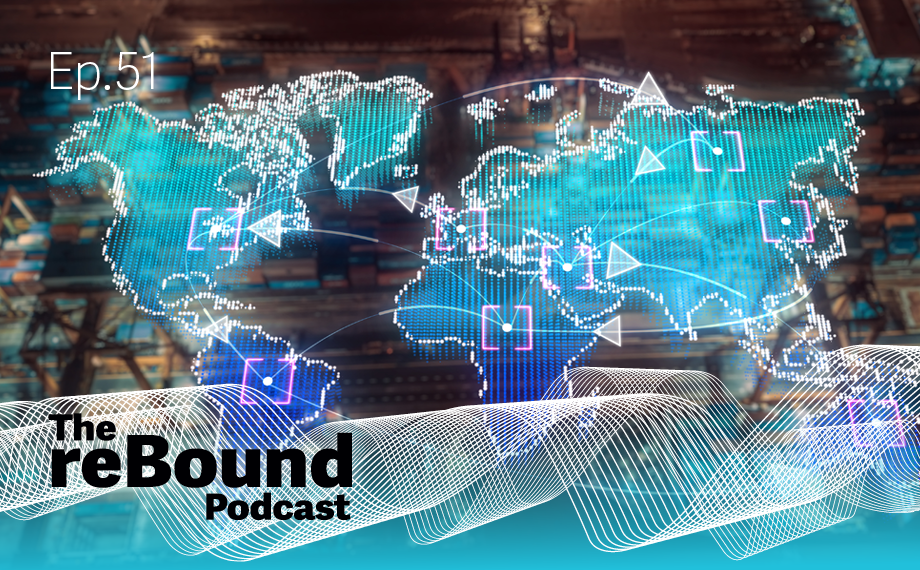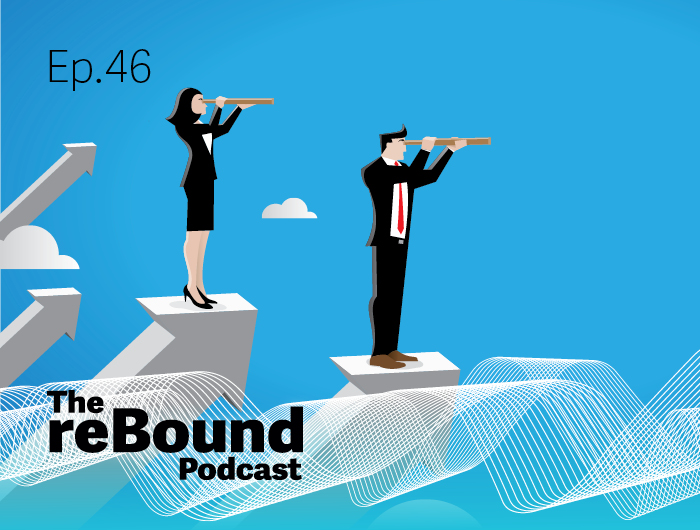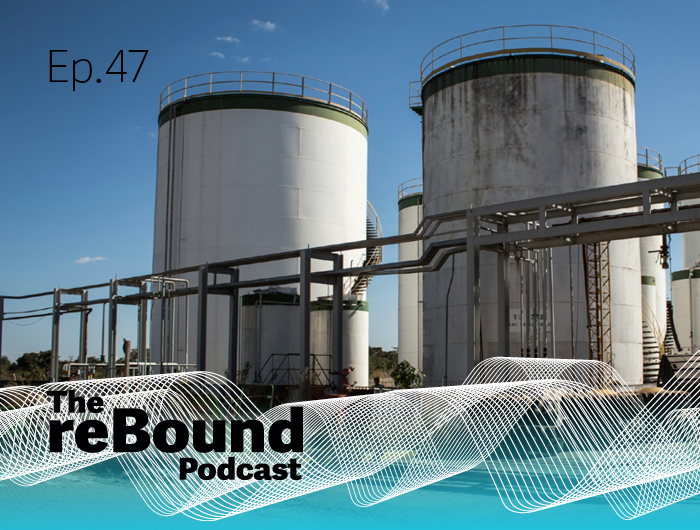Intro: Welcome to The Rebound, where we'll explore the issues facing supply chain managers as our industry gets back up and running in a post-COVID world. This podcast is hosted by Abe Eshkenazi, CEO of the Association for Supply Chain Management, and Bob Trebilcock, Editorial Director of Supply Chain Management Review. Remember that Abe and Bob welcome your comments. Now, to today's episode.
Bob Trebilcock: Welcome to today's episode of The Rebound: SCOR Goes Digital, A Tool For Transforming Supply Chains. I'm Bob Trebilcock.
Abe Eshkenazi: I'm Abe Eshkenazi.
Bob: Joining us today is Peter Bolstorff. Peter is Executive Vice President of Innovation and Business Intelligence at ASCM. He oversees the ASCM content and event programming strategy, advanced analytics and business intelligence, customer support, and B2B business operations. Peter is also the author of Supply Chain Excellence, a handbook for dramatic improvement using the SCOR model. He has more than 25 years of experience in supply chain management and operations management. Peter, welcome.
Peter Bolstorff: Thanks, Bob. Thanks, Abe.
Bob: We're thrilled to have you, Peter. The last time we had you as a guest, you may not remember, you introduced us to DCM, it was an acronym for a digital capabilities model for digital supply networks. We described it then as a reference model that enhances SCOR, the model that so many organizations have used to improve their supply chains. Of course, SCOR was developed before we were all talking about digital transformation and digital capabilities. Today, we're going to talk about the next step in the evolution, the SCOR Digital Standard, or what I'm going to call Digital SCOR. Abe, I think you ought to kick us off with this first question.
Abe: Absolutely, Bob. Peter, let's kick this conversation off with maybe a pick up from where we ended the last conversation. That is the definition or the meaning of digital transformation to organizations. From your perspective, how are organizations viewing this and how are they operationalizing it?
Peter: Great question, Abe. I'm going to use an analogy, and then I'll get into the supply chain part of it but if you think about the digital transformation of us getting directions to go to a location. It moved from the Thomas Guide to GPS to our phones. It's the same basic job to be done, how do I get from point A to point B, but it's using automation and digital tools to be able to fill in that gap.
When you think about how people plan their supply chain, how people source, how they order, how customers order, how they fulfill, how they return things, it's the same analogy. They're finding automation and digital tools that will help automate the way that the supply chain moves. Digital transformation, again, if we put the word digital away, transformation is basically just how do I get from point A to point B moving everybody in the same direction so we all land at the same spot.
Bob: Peter, SCOR has been around for a long time. I'm always surprised at how many organizations are still using it to benchmark their operations and close the gaps. As an example, I'm working on a piece with one of your clients Petrobras right now for an upcoming issue of Supply Chain Management Review, put in SCOR, not this new digital model, or the enhanced digital model, and had some really remarkable results in terms of their inventory spend. Given the success SCOR has had over all these years, what was missing? In other words, why the update?
Peter: I think the update stems back from a challenge that our board issued a number of years ago in terms of, I'll call it, just digital transformation over time. There were some capabilities that were missing. People can take the old SCOR and retrofit or engineer it to be able to represent their business, but there were some things that would make it easier to use. Separating deliver into two pieces, order and fulfill allows us to be able to model the omnichannel, the Amazons and walmart.com, target.com, et cetera.
Within the sourcing component, we heard forever sourcing professionals would say, "Hey, look, you're only capturing a part of my job. It's really the transactional piece." We were able to add strategic sourcing, indirect and direct procurement. When you think about orchestrate, which is a new process, again, we had feedback from folks that you're missing a strategic layer that really connects the supply chain to the business. Orchestrate is a completely new layer and a completely new set of processes that are supporting the rest of it. Then when we think about product as a service, it wasn't just make anymore, it's how do I think about products for sure, but how do I also think about services around them? The make language needed change to transform.
Then the other one was, as we think about the triple bottom line, again, it's been in the APICS repertoire for a long time, but as you see all these the ESG commitments from the corporate community, it's really how do you think about resilience, customer-facing measures? How do you think about your own internal, but there's a third component now, that talks about environmental and social aspects. We needed a whole new metric scheme to be able to support the triple bottom line. Those were the biggies.
Abe: Peter, when you take a look at all the new capabilities and the enhancements that you just described, give us a sense of what was the methodology, how did you align and how did you aggregate all the new offerings and all the inputs? Give us a sense of the mechanics of this.
Peter: Great question. Again, if we go back to the supply chain council, again, it was a bunch of impassioned volunteers that put it together. I think what ASCM has done is taken its, I'll call it best practice, standards development and applied all those principles, brought in 70 global passionate volunteers, and then very systematically looked at, what are the key things from a job task, what are the key things from an organizational capability standpoint that we need to make sure so that everybody, individually and corporately, could see themselves in the new model? That was kind of our key success criteria. Then I think we had an overall editor and project leader that actually made all of the 70 voices one. Again, so excited about the output. Again, it's been received tremendously by the community.
Bob: Peter, in one of the earlier questions, when I was asking you about closing the gaps and what was missing, you highlighted a lot of the new functionality and new capability. I'd like to look at that again, and maybe look at it with a little bit of twist, which is digital is in the title now. When you were talking about digital transformation versus transformation, some of those new capabilities could apply to non-digital. Sustainability isn't necessarily a digital capability but we're in a world where supply chains are going through digital transformations and digitizing processes. How does digital factor into that, to everything you're doing now?
Peter: When you think about kind of the order of events, when the board authorized our digital task force, the very first thing we did was to take the oldest SCOR model and take it out of a thousand pages and put it online. There's that aspect of the digital thing. How do I access the model within the constituent base, so I can actually reference it? The second thing was to really talk about what you just described as digital capabilities. Those would be things that blend process, practices, and technology together. Because, again, the lines are getting blurred.
If you've ever asked ChatGPT a question, you would find the level of automation and the humanness that we're seeing in this evolution is just getting crazy, crazy good. The digital capabilities model taught us around what are those essential digital capabilities? We use that then to inform the new SCOR process reference model, on changes to process, changes to practices, changes to metrics that would help model those digital capabilities. I hope that gets to it, Bob.
Bob: Yes. I'm going to think back to the interview I just did with the Petrobras people, and they talk about when they started a process of using SCOR, now this was before the digital SCOR, the first thing they were doing, they spent like three months capturing data about their organization, and then benchmarking those processes against the SCOR model to identify the gaps. If I'm a company trying to digitize my operations and to go digital, can I do that same thing? Can I figure out and benchmark me against other companies in the process of a digital transformation and identify gaps and how I might fill them?
Peter: Absolutely. I think the process, again, having gone through-- we move through between 30 and 50 of these benchmarks annually. Again, the process is very similar. The first step in this whole thing is to really understand what does the end-to-end supply chain look like and how do I define it? SCOR becomes incredibly valuable. How do I measure it? Then using our core mark benchmark with our partner, PwC, then we'll go through and analyze competitive population. Using SCOR metrics, we'll measure where you're at today and then from a competitive requirements standpoint, where do you want to be in the next three to five years?
Then the last question is: what digital capabilities are going to help me get there? I want to double-click on that, Bob. What we're finding is there's two parts to digital capabilities, 30% of the functionality that people own today they bought five years ago. They're only using 30% of the invested capital. This SCOR is helping companies catch up to what they've purchased. What this allows for is to get real return on invested capital and then to really think about what are those precious few digital capabilities that are really going to give me a competitive advantage?
That's where you see the SCOR mark benchmark, the digital capabilities model, and the SCOR Digital Standard working together to be able to build out that 360 profile.
Abe: Peter, give me a sense here. You talk a little bit about the digital transformation. Almost every organization is indicating that they're going through some form of digital transformation. Again, definitions being operative here or variable for organizations. Give me a sense from organizations, is this something that they need to take on at the beginning of the journey or for organizations that have gone through or started, can this be a benefit in terms of helping them get to the finish line?
Peter: Great question. There's a phrase that I use a lot called “the journey is my home.” I think companies that put themselves and have earned the right to be able to say that their supply chain excellent organizations look at it not as an endpoint, but as a journey, and building on prior experience. I know when we did our EIU collaborative work on resilience, we identified operational things and strategic things. I think those folks that work on how do I take the lessons of the past and build them into future decision-making are the ones that are really accelerating growth and profits.
The interesting thing is we look at our own data sets, the distance between leaders and laggards is growing. Again, I had stated in some earlier conversations that this new disruptive environment is really going to weed out those folks that are destined not to survive.
Bob: Peter, and I'm really hoping you can help me with this. This is one of those things I've written about it, I've published, and I still don't understand it. One of the big changes I hear coming from the academic community, the consulting community, is this notion that we're no longer dealing with supply chains, but supply ecosystems. The ecosystem being the operable word. Does digital SCOR address the ecosystem? If so, how?
Peter: Great question. The answer is yes. As we think about the end-to-end supply chain or supply chains of a particular organization, one of the things that we fix is we actually put the customer first. When we think about multiple customers to an organization and then multiple suppliers that not just go one tier back, but two and three, because of ESG requirements and policies that we're seeing, and so this ecosystem is growing. The level of knowledge that you have to have on the entire ecosystem because of performance expectations on your organization continues to grow exponentially and so does the digital capability of being able to sense and keep track of all of that.
For example, if a government has an AI tool that is flawless in tracking all of its imports, and you as an organization are bringing in something that was sourced from an area of the world deemed not appropriate, simply pleading ignorance isn't going to be good enough. There's going to be other implications. Those things and those tools and technologies are being deployed today. More than you wanted to know, Bob, but pretty passionate about this.
Abe: Peter, I think we're all very excited about how the new digital SCOR enables organizations. Can you tell our listeners how they can access it, and what they can look forward to?
Peter: Absolutely. The link will be included in the show notes for sure. One of the other fundamental decisions that we made was not just for the SCOR digital standard, but also for our digital capabilities model, our supply chain sustainability standard, we made all of those available to the public. You can find the SCOR at scor.ascm.org
Again, it will be a link that is included in the show notes. The other thing that we put out there is the ability to take free learning as part of that. You have to have an ASCM account, just click the link. We've had a tremendous reception to the new things. Not something that we've done before.
Abe: Peter, thank you so much. That is all the time that we have today. Special thanks again to Peter for joining us today, and a special thanks to you for joining us on this episode of The Rebound. We hope you'll be back for our next episode. For The Rebound, I'm Abe Eshkenazi.
Bob: I'm Bob Trebilcock.
Outro: The Rebound is a joint production of the Association for Supply Chain Management and Supply Chain Management Review. For more information, be sure to visit ascm.org and scmr.com, we hope you'll join us again.



